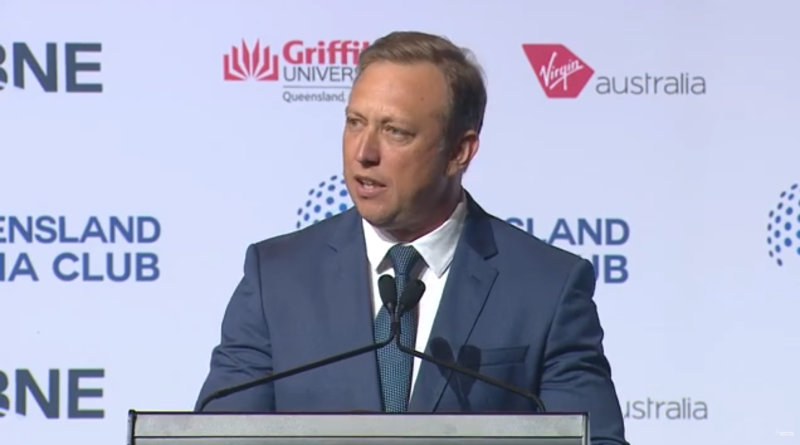With the Queensland election next Saturday, the newsrooms have ensured voters are profoundly misinformed, as Alan Austin reports.
IN JUST TEN MONTHS, Queensland’s fresh new premier has impressed objective observers with his economic achievements.
Steven Miles has found jobs for an extra 78,100 Queenslanders (seasonally adjusted), more than half of them full-time. That was a rise of 2.7%, or 3.2% annualised.
That compares favourably with the other states. Only Victoria fared as well. Tasmania and South Australia actually lost jobs over that period. The national rise was 2.2%.
Sound employment outcomes
In fact, since Labor took office in Queensland in 2015, job numbers (original) have grown by 29.6%, up from 2,279,400 in January 2015 to 2,953,700 in September. That is the strongest percentage rise of any Australian state.
The national increase was just 26.4%, with only Victoria and Queensland above that level. All other states were well below, with Tasmania managing only a dismal 17.4% increase over those nearly ten years.
Queensland has had the second-highest expansion of the labour force in recent years, behind Victoria. It now ranks third on participation rate behind Western Australia and Victoria, and also third on the employment to population ratio.
More impressive, however, is the improvement in underutilisation, which is the total of workers who cannot get enough hours to earn the salary they need plus the jobless.
Nationwide, this has decreased slightly this year as a percentage of the workforce, despite migration surging. But the improvement has been patchy. By far the best outcome has been Queensland’s where the rate tumbled from 11.4% to 10.7%.
The national improvement was only from 10.5% to 10.4%. The percentage actually worsened in Victoria, South Australia and Tasmania.
Queensland’s overall ascendancy
Since Labor resumed control of Queensland’s crumbling economy in February 2015, following three disastrous years under Campbell Newman’s Liberal National Party (LNP), it has improved remarkably.
As IA reported at the time, The June quarterly accounts from the Australian Bureau of Statistics (ABS) showed Queensland led all states in enjoying the consumption of goods and services, or “final demand” as the statisticians call it.
Western Australia and the Northern Territory actually went backwards, while Victoria stalled.
The latest ABS quarterly accounts, released last month, show Queensland leading the nation on the increase in workers incomes over the last five years.
The national growth in compensation to employees was 36.8%, with Queensland, Western Australia, Tasmania and the ACT higher than that.
Of these, Queensland was clearly the best achiever with a thumping 47.1% lift. See chart below.

Impressive gains in housing
Total value of new housing loans taken out by both investors and owner-occupiers is increasing nationally, but also doing so unevenly.
According to Dr Mish Tan, ABS head of finance statistics, Queensland now leads on housing loans. Dr Tan said:
“Lending in Queensland grew strongly in the past 12 months and was the key driver behind the [national] August increase…The total value of lending for housing in Queensland rose by just over 40 per cent in the past 12 months. This $2.0 billion rise was more than any other state.”
From loser to winner on debt
ABS data shows that in 2013-14, under the last LNP Government, Queensland had the worst debt of all states. This followed the debilitating global financial crisis (GFC) combined with Campbell Newman’s failed administration.
The latest figures confirm that after Labor’s long run of effective budgets, Queensland now has the strongest net savings status.
The quantum of Queensland’s savings as at June 2023, according to the latest ABS release, was $5.88 billion. Western Australia was well behind with $2.50 billion.
The other states were in net debt, with New South Wales and Victoria deeply so. See blue chart, below.

Comparing premiers over time
Queensland has had seven premiers since the restructure of Australia’s economy in the 1980s, two LNP and five Labor. Consistent with other states and nationally, the strongest jobs growth has been under Labor governments.
The best period for job creation in the modern era was under Peter Beattie from 1998 to 2007. This is despite the lean period through the early 2000s recession.
Steven Miles has only been in office for ten months of job reports, but already has added an impressive 78,100 jobs at a yearly rate of 3.25%. See chart below.

Rob Borbidge unaccountably squandered his opportunities during a period of economic stability through poor decision-making.
Wayne Goss copped the early 90s global recession and lost thousands of jobs in his first two years, but recovered well thereafter.
Anna Bligh took charge five minutes before the GFC whacked the nation, the worst recession since the 1930s.
Campbell Newman simply wasted three years of prosperity and growth through the boom years following the GFC.
Media mendacity – as always
Of course, none of the recent good news matters if voters never get to hear it.
The newsrooms are certainly not reporting it accurately, but seem determined to replace the administration now serving the majority soundly with one which will favour the wealthy and particularly the mega-rich.
Recent headlines include:
It will be a sad loss for the community and a victory for the shonks and shysters if the Premier has succeeded in generating more jobs for Queenslanders than most of his predecessors, then loses his.
Alan Austin is an Independent Australia columnist and freelance journalist. You can follow him on Twitter @alanaustin001.
Support independent journalism Subscribe to IA.
Related Articles






